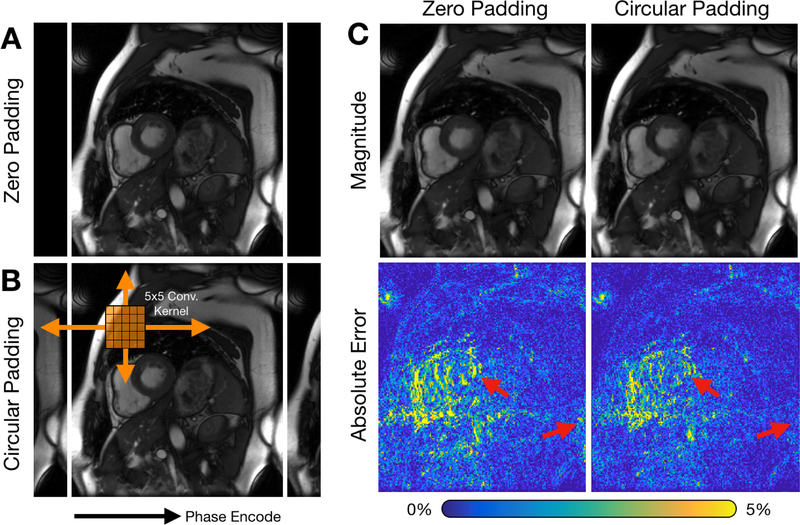Fig. 4.
Circular convolutional layer for MRI reconstruction. Current deep learning frameworks support zero-padding for convolutional layers (shown in A) to maintain the original dimensions. However, data are measured in the frequency space, and the FFT algorithm is used to convert this data into the image domain. Thus, for Cartesian imaging, circular convolutions should be performed. This circular convolution can be performed by first circularly padding the input data as shown in B and cropping the result to the original input dimension. For cardiac cine imaging, images can also be circular padded in time to take advantage of cyclical dynamics such as heart motion. Examples of 8X subsampled datasets reconstructed using a 3D unrolled neural network with and without circular spatiotemporal padding are shown in C. Images reconstructed with circular convolutions depict reduced error at image edges and heart tissue at end-systole (red arrows).

